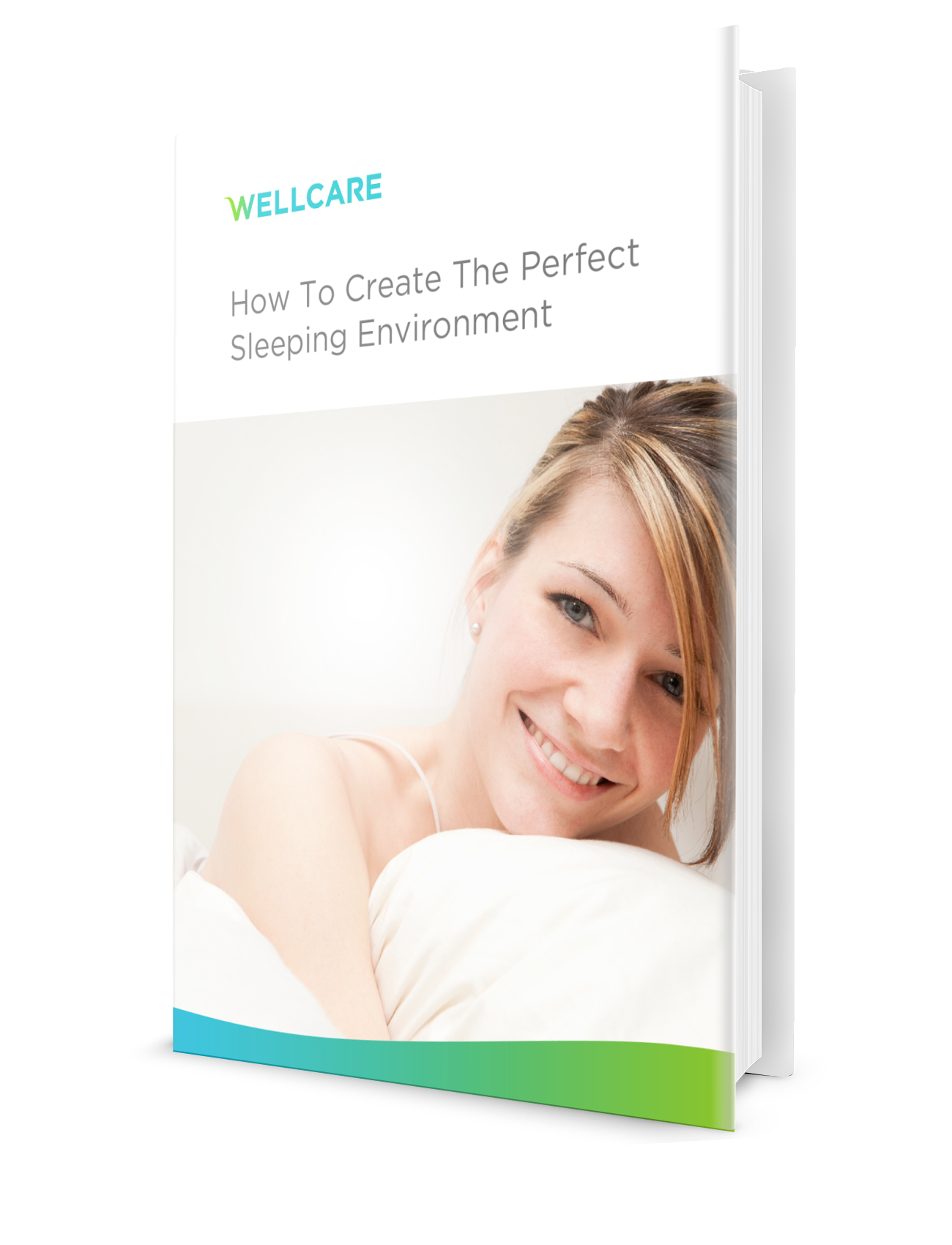
Body aches are a very specific type of pain – one that is generally relevant to muscles and joints. A body ache is described as sharp and can be characterised as an intermittent or dull persistent type of pain. These can include but are not limited to: neck pain, pelvic pain, headaches, muscle pain, and abdominal pain.
What Causes Body Aches?
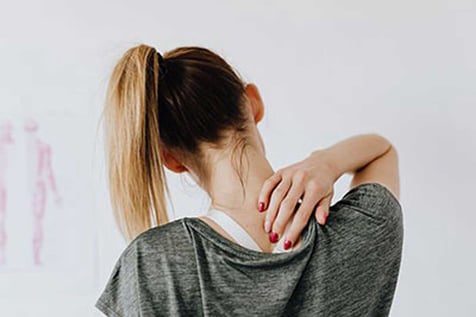
Pain is a part of life. It is innate and an inevitable part of the macrocosm of our existence. Just as cells are the building blocks of our bodies, our brains possess synapses, producing electric signals from one neuron to another to signal a neurological impulse.
Our brain possesses synapses that transmit information that our body interprets, providing us with information and how we can react and interact with our immediate environment. When our body is in trauma or pain, the brain sends us signals that let us know that something is wrong. And so, pain is quite essential to identify if the body is in a state of trauma, stress, or suffering.
Whether it be to seek professional medical attention or to
find ways to soothe the pain before medical intervention is
readily available, there are a number of ways to deal with pain.
However, it is imperative for us to seek out medical help
when certain body ache symptoms occur.
Mild body aches may present themselves temporarily or might last for even a few days. However, a major cause of concern is a penetrating pain that is persistent or may even last for more than a few days.
Seek immediate medical attention when you experience severe pain that manifests despite having applied regular home remedies or the use of prescription medicine. Your physician may recommend musculoskeletal examinations, ultrasound scans and radiological examinations that are non-intrusive such as x-rays, computed tomography, and MRI. Other tests such as electromyography and blood draws can also be used to determine the source of pain. An individual should seek immediate medical attention when experiencing the following symptoms:
However, there are cases wherein one must not wait in order to seek medical help. If symptoms occur within the first twenty-four hours and are accompanied by two or more of the following, we recommend that you call emergency care immediately:

Case Studies: Body Aches vs Chronic Pain
What do body aches feel like?
Body aches and muscle pain may often be misconstrued as synonymous. However, there are differences to be made between the two. A body ache is characterised by muscle soreness, rather than a searing pain that afflicts the joints or muscles.
It can be at times intermittent yet persistent and lasts for a short period to three months. An ache is no different from the pain one feels right after a jog, a workout at home or the gym. This is due to the reason that body aches and muscle pain are relevant to inflammation.
On the other hand, chronic pain is a more continuous type of pain that has been bothering the patient for more than 3 months. Though the pain isn’t always present, the intermittent, unpleasant pain still disrupts people’s day-to-day activities.
Many medical journals in the United Kingdom and countries in Europe do not make explicit associations between the two. Although body aches can be described as more serious and persistent, they can also be considered just as unbearable when left untreated or ignored.
Prevalence of Chronic Pain: UK Studies
BMJ's interesting epidemiology research conducted in 1990 wanted to investigate the prevalence of chronic pain in the US. Based on their previous findings, 19 studies presented data from 139,933 adults residing in the UK. The chronic prevalence of body aches demonstrated a trend with an increasing rate based on age group. The sample comprised 14.32% in the 18 to 25-year-old age group, and 62% over the 75-year-old age group.
Further studies were conducted between the years 1990 to 2000. Chronic pain was found to be more common in females rather than males. Chronic pain affects almost a third and a half of the UK population, based on a 28 million population sample size, BMJ research suggests.
This is more likely to increase in the following years as the population ages. The purpose and intent of the study were to investigate the prevalence of chronic pain based on the category or definition applicable to the sample population. The study defined the different types into:
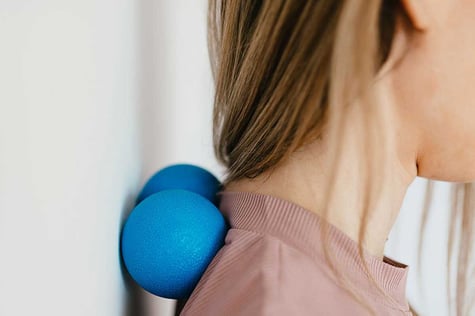 Chronic Pain: defined as pain in one or more body locations, lasting for a period of 3 months or longer.
Chronic Pain: defined as pain in one or more body locations, lasting for a period of 3 months or longer.Studies presenting data relating exclusively to or specified
body regions (e.g. chronic pelvic pain only or chronic lower
back pain only) were not included in the review, as they
would likely underestimate the prevalence of
(non-site-specific) chronic pain.
Chronic Pain Prevalence: Pain in Older Adults
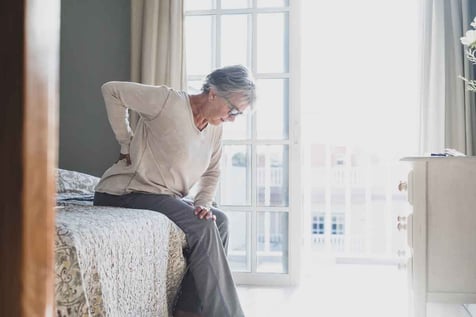 According to the British Pain Society in its published work “Evidence-based clinical practice guidelines on the management of pain in older people,” ageing is associated with increased risk of functional impairment and disease. With these factors set into play, older adults are found to be more susceptible to chronic pain.
According to the British Pain Society in its published work “Evidence-based clinical practice guidelines on the management of pain in older people,” ageing is associated with increased risk of functional impairment and disease. With these factors set into play, older adults are found to be more susceptible to chronic pain.
A team of medical experts conducted a review to provide an update on the 2013 publication. Practitioners involved in the study were members of the British Geriatric Society, British Pain Society, and Royal College of Nursing. Thematic groups were tasked with reviewing literature that was relevant to their subject matter of expertise.
Methods
The research design method used was a systematic search strategy, utilising a Bolean search and proximity operators. Conducted in May of 2018, the study included papers published between 2009 (the date of the last review) to March 2018. The included papers were assessed using the Scottish Intercollegiate Guidelines Network methodological grading system. Each paper was given an appropriate score and peer-reviewed accordingly.
According to the results of the study, pain prevalence was higher in residential care settings based on the 2013 report.
Other findings have shown similar results and suggest little change over time.
These have been identified as manifesting in older adults above 75 years of age, in the last two years of their lives, experiencing increased pain in the last four months of their lifetime. Other factors that determined chronic pain prevalence were ageing, disability, obesity, and dementia.
Furthermore, a number of studies also point out that although it is widely known that the prevalence of chronic pain exists, under-treatment for such is equally manifest.
Such findings are addressed to health care staff involved in providing assessment and treatment to older adult populations suffering from chronic pain. This includes palliative, neuropathic and non-cancer specific chronic pain.

Is there an exact science behind body aches? Significant research has been done to address specific types of pain, including but not limited to chronic cases. In recent years, researchers have found a receptor (a special type of protein within the cell). The TRPV1 is a special receptor that reacts to heat and can explain the proclivity of pain. Although there is still much debate as to how the brain processes these signals and interprets them into “feeling”, scientists are now deciphering how this intricate process happens. The TRPV1 reacts and detects the shape of certain body compounds (referring to the chemical compound structure).
The receptor detects the changes in these compounds, directly identifying painful heat. It reacts to specific heat stimuli. Not only does it respond to such bodily compounds, but it also reacts to chemical compounds that make chilli peppers especially spicy. TRPV1 is most active in response to heat activators in the environment. Vanilloids such as capsaicin activate TRPV1, in effect depolarizing the cell membrane.
This means that the receptor is our first line of defence to heat injury. Studies found active regions in the brain where TRPV1 is activated in response to trauma caused by high heat exposure. Such is the case when one burns his hand when accidentally touching a hot stove.
Although scientists have yet to find clear cut answers that explain the science behind when these signals or messages are interpreted by the brain as the “feeling of pain” or “body aches'', in some cases doctors know exactly why pain is prevalent.
For example, certain illnesses such as arthritis, (due to inflammation of the joints) and diabetes (pain stems from nerve damage) have specific causes that doctors can pinpoint.
However, now the current belief of pain researchers and scientists attribute chronic pain to a malfunctioning nervous system. In certain cases, body aches require an intensive body examination to determine a root cause.
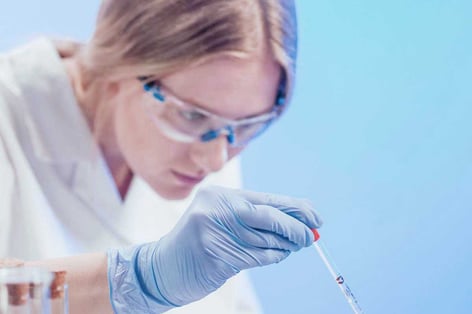
Research has found that nerve cells take different physical attributes when an individual is experiencing pain. This literally means that pain changes the physical structure of nerve cells. These changes, as research suggests, occur in both the brain and spinal cord.
According to Theodore Price, a pain researcher at the University of Texas-Dallas, the pain can linger even after the initial trigger or exposure. This is referred to as a “pain memory” wherein the chemical changes cause an imprint within the cells. Researchers theorise that should these changes be reversed, this can be a cure to chronic pain.
Price and his team of researchers have tested drugs that impede the transmission of pain signals in the brain.
These drugs have yet to be tested on people as it is
currently in the early stages of development, with one
cause for concern being their side effects on human
memories. Much more work and research have to be done
before undergoing human clinical trials. Price's research has
evident success when tested on rat specimens.

Wellcare users have reported different types of pain in certain areas of the body including sciatic pain, arthritis, lumbar disc herniation, and even menstrual cramps. Wellcare emphasises the need to consult a physician or a medical practitioner to isolate the main cause of pain; be it for chronic pain or a body ache, prevention is always better than cure.
Our research tells us that certain types of pain can be addressed and may provide temporary relief while immediate medical attention is not readily available. However, the best course of action is to seek professional care or treatment immediately. Our tips and advice do not replace the diagnosis and treatment of a medical professional.
Wellcare is not responsible and will not be held liable for consequences caused by lack of prompt diagnosis and treatment. Our suggestions merely address temporary body aches and minor pain and are a short-term recourse.

There are hundreds of conditions that point to the cause of lower back body aches. No standard exercise or regimen can fit all, as bodily conditions and lifestyle patterns are unique to individuals.
However, one Wellcare case study suggests that sleeping in a hammock has been found to relieve pressure in the lower back, providing temporary lower back body ache relief, and fostering better sleep quality. One Wellcare viewer explained that the use of a hammock improved sleep regulation, as it provided ample back
support during a nap. Sleeping in a hammock has been found to be
a workaround, and some people use this for daily naps in foreign countries.
Benefits

One benefit as opposed to using an unsuitable mattress - is that the body has specific pressure points when suspended in a hammock. Sleeping in a hammock provides a large curvature of the spine and opens the lumbar spine, therefore providing comfort.
This feature is better suited for individuals with vertebral foreman stenosis or tightness along back muscles and is not recommended for people with typical disc herniation or acute lower back pain. In addition, due to the hammock being suspended in the air, which provides a swaying pendulum motion, this allows for relaxation and promotes restful sleep.
Ensure that you make use of a pillow to support your neck, and roll a
blanket and situate under your knees for elevation. This will help with
posture and blood flow.
Other benefits include:

Physical Limitations and Target Users
Assessing the musculoskeletal system, getting on and off the hammock may pose some challenges for others. Thus, sleeping in a hammock is not recommended for everyone. There are other concerns, such as the risk of falling, and is less suitable for those with poor balance and older adults.
To fully ensure that you maintain balance in a hammock, maintain a vertical position without your arms extended. Also ensure that you are in a supine position, to make sure that your spine is in its proper posture.
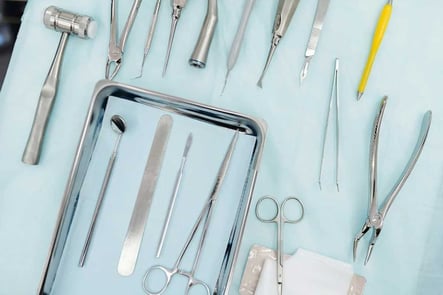
One fatal cause of chronic pain is due to nerve injury post-surgery. Surgeons aim to avoid nerve damage as much as possible during surgery, however in some cases nerve injury may be inevitable.
One primary cause of chronic pain is due to significant nerve injury, which varies depending on a mild lesion with a transient loss of function wherein spontaneous recovery is still possible.
Severe cases posit or require nerve repair to achieve complete healing or recovery of complete motor function. These kinds of cases include post-operation conditions in hip replacement and shoulder replacement surgeries where sciatic nerve damage or damage to the sciatic axillary nerve is sustained.
That said, each case is unique and not one or two are the same.
One case study Wellcare collected describes an injury to the
sciatic nerve.

The nerve clinic has identified the following symptoms that attribute to nerve damage:
Impression and Recommendation
The extent of the nerve damage has to be formally diagnosed and assessed by a medical practitioner. Once identified, a treatment plan is designed and prescribed.
Although surgery is not always required, a doctor will need to fully assess the condition before correcting this with another surgical procedure. Nerve injury may be a result of a surgical complication. Because of this, prompt action to address the nerve injury ensures that further complications or disability be kept at a minimum should symptoms arise.
There are a multitude of reasons why we experience body aches. Body aches may be a more common type of pain as opposed to its severe categories. In a study conducted in 2016, the Arthritis Research UK found that 28 million Brits are afflicted with chronic pain.
In a nutshell, Brits are not foreign to body aches, and sore muscles and joints have been a pre-existing problem for decades. However, research suggests that there is still a rising need for a more systematic and advanced form of treatment for chronic pain. Here we identify the most common causes for body aches, and how to deal with them.

One of the common reasons why our body aches is stress. A feeling of stress due to a pressing situation such as work dynamics or stressful life events and changes may lead to fatigue and body aches. Stress can cause tension in the shoulders, back, and neck and manifest as muscle strain and aching.
In addition, other physical manifestations such as tightness, muscle soreness and spasms can be a direct result of stress or mentally draining situations. According to the American Psychological Association, stress can also lead to flare-ups of other illnesses such as arthritis, lower back pain, and other illnesses because it lowers the pain threshold.
One other cause for body ache or muscle stiffness can be traced to excessive exercise and hard physical labour. Alongside this, physical tiredness coupled with long-term use is another cause for pain in specific muscle groups.
This may bring additional causes of physical discomfort, in addition to rigorous activity. This occurs when one starts a physical exercise or program or has chosen to increase the periods in which they conduct a strenuous activity given a short period.
As a result, tension and tightness occur when muscles work harder than the threshold the body is able to endure. This causes microscopic lesions to muscle fibres, resulting in muscle constriction or soreness. Delayed onset muscle soreness (DOMS) is a mild laceration a large area of muscle fibre and is brought about or is caused by:
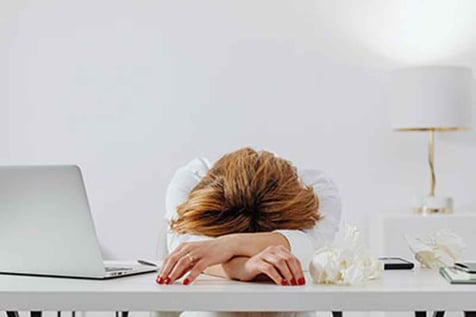
The main characteristic of the condition is extreme tiredness, otherwise known as fatigue. While this cannot be explained by physiological reasons, it can eventually worsen in light of high levels of physical exertion or psychological stress. Some symptoms that one might experience with this condition include:
To address this condition, sustained rest or meditation is recommended to keep the body at ease. Activities such as intentional mindfulness can and may lessen one’s overall feeling of tiredness.
In addition, calming and breathing techniques may be employed to achieve a state of rest. Mild to moderate exercises such as taking a short brisk walk, or stretching may also lessen anxiety levels, but does not resolve body aches.
Certain drugs called statins lower cholesterol levels, however, statistics show that 30% of users report muscle pain after usage. Side effects of taking the drug include muscle pain, headache, dizziness, low blood platelet count, digestive system issues, such as diarrhoea, constipation, indigestion, and gas.
A doctor may choose not to prescribe this medication if one is at risk of heart attack or susceptible to cardiovascular disease.
Consistent pain in the arms, legs or both of these may be indicative of a blood flow issue. Claudication is a condition in which you feel a searing pain in your buttocks, calves or thighs. The symptom is known to be associated with peripheral artery disease (PAD). A disease of the blood vessels outside the heart and brain.
The cause of the disease is often due to fatty deposit buildup in the arteries. You may feel pain when you walk or sit. This condition is called arteriosclerosis in the medical field, which is a blockage in the arteries, preventing the passage of blood to the muscles. Another disease of the blood vessels, usually occurring in the ones external to the heart and brain.
Pathological changes that occur inside the vessels cause the disease, blocking the arteries that carry blood to the muscles. This is the sort of pain that you may experience when walking or even when you sit for prolonged periods.
Illnesses that are not manifest or chronic medical conditions that may not be immediately observable can also be a cause of body aches. Other implications may also be considered, such as autoimmune diseases which body aches can be a symptom of.
This is why it is essential to get a physical examination or testing, whether it is a minor body ache or chronic pain. Infections or viruses may also cause body aches. When the body has an infection, it sends white blood cells to fight off bacteria or viruses. As a result, inflammation occurs which eventually leads to a body ache or muscle pain.
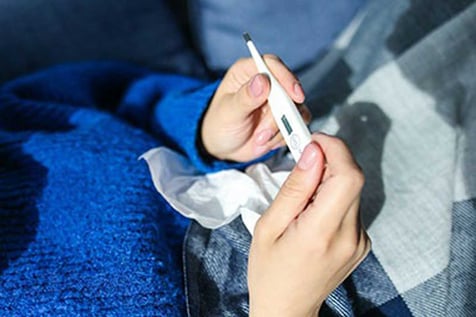
A body ache can manifest itself when one has a virus, flu or other infections. One reason behind this is due to a chemical the body produces called prostaglandin (PG). This chemical helps eliminate the illness, however, it also causes a reaction that leads to body aches.
Some pain relievers and flu medication impede the production of PG. Prostaglandin enzymes resemble that of crystals with tube-like structures. The job of an ibuprofen or pain reliever is to block the tube that produces PG.
When the thyroid gland does not make enough hormones to sustain bodily functions, the body suffers from a condition called hypothyroidism. Symptoms of this condition can include muscle and joint aches, followed by tenderness and swelling. In addition, hypothyroidism can also cause unexplained tiredness, memory loss, hair loss, dry skin, high cholesterol levels, and other physical manifestations.
A doctor can draw a blood sample to determine or rule out if one is afflicted with the disease. An individual that suffers from hypothyroidism is prescribed certain drugs that act as a hormone replacement to manage these symptoms.
People suffering from the disease lack the number of thyroid hormones in the bloodstream needed to increase metabolism. Other representations of the condition include weight gain, fatigue, and the inability to withstand cold temperatures.
 Lupus
LupusAching felt in the joints may be due to an autoimmune disease that causes the immune system to attack healthy tissues and organs. Lupus affects muscles and joints, causing stiffness and muscle soreness.
Although it does not have a known medical cure, pain management medication is prescribed and certain exercises can help regulate the severity of the affliction. Talking to a doctor regarding a treatment plan to address the disease will help curtail flare-ups.
Some patients describe the pain experienced with Lupus as debilitating, or even marked with agony. Learning to control flare-ups is essential to dealing with
Lupus. According to the Center for Disease Control and
Management, Lupus flare up management includes
dietary restrictions, stress management, and moderate
exercise. It’s also important to have a support group that
can help in coping with the disease because repercussions
on mental health can take a toll on the person suffering.
Moral support is necessary to help patients fight and adapt
to the disease.
A disease such as polymyositis is a known cause of body aches. Those who suffer from polymyositis (PM) experience weakness of the shoulders, neck and back. The severity and period of affliction may vary from a few days to as long as a few months.
Body aches and tenderness are common manifestations that polymyositis patients experience. The disease, although can cause immense discomfort, is not life-threatening. Polymyositis attacks muscle fibres and thereafter the weakening of the muscle tissue.
According to the Centre for Disease Control (CDC), polymyositis is a condition that afflicts people of all ages but is most common in adults ages between 31 to 60 years.
The exact cause of this disease is unknown, however, it is categorised as one of the rare autoimmune diseases. It is known to be associated with viral infections, connective tissue disorders and increased malignancy risk such as cancer.

Pain, although an inevitable part of life, need not be sustained. Individuals need not suffer the burden that body aches bring. Although the topic of pain management posits polarising opinions, pain management research in the United Kingdom and Europe has been stratified, and common themes have been observed.
There is a pressing need for adequate and organised health care, with so far as a call for the improvement of pain relief drug procurement, administration and healthcare provision strategy and policy in chronic pain management. However, as far as body ache treatment is concerned - strategies remain simpler and even more direct. Research shows that body ache relief management and implementation require a less formal and structured approach.
Medicine that can be easily acquired over the counter may temporarily relieve body aches. However, there is no medically found information that suggests that body aches do not require prescription-strength drugs such as analgesics and opiates.
However, research does suggest that in the administration and usage of medicine, it is always easier to start with the lowest effective dose possible for the shortest amount of time possible.
A doctor’s advice is necessary when using all types of medication as the human body differs from person to person. The key to maintaining a healthy physique and staying safe at the same time is to adhere to the advice of experts.
The key to using any pain medication is to avoid dependency on pain relievers. Some common examples of over the counter drugs include acetaminophen (Tylenol) and non-steroidal anti-inflammatory drugs (NSAIDs).
Wellcare cautions the reader that medical advice from a licensed medical practitioner is sought out before the consumption of such medicine. This is important because a doctor can give the right dosage and instructions on how to administer or consume medication.
There are alternative ways to help soothe or ease body aches. Moderate physical activity as warranted by a physician is considered healthy for the muscles, joints and bones. This generally helps strengthen core muscles, as well as joints.
Studies also show that regular to moderate exercises can help ease body aches. These exercises can be done in a safe environment, with a physical therapist or licensed practitioner that facilitates the activity. Some of these activities include mild to moderate exercise, done in gradual intervals which allows the body to adapt to increasing changes of difficulty. These include:

The phrase “you are what you eat” resonates well with most people because the statement does have a level of truth to it. A proper diet will help with soothing body aches as proper nutrition provides the body with the necessary nutrients and compounds it needs to fight disease, infections and reduce inflammation.
Incorporating a healthy lifestyle will lead to a healthier body and mind. Food plays an important role in keeping a well-nourished body. Healthline studies show that consumption of certain food items helps diminish the incidence of body aches. These include:
Coffee - Studies show that caffeine reduces fatigue temporarily and studies show that it supports heart health.
Bananas - Potassium can decrease the incidence of body aches, providing minerals and electrolytes which help in nerve and motor function.
Hydration - It’s recommend to always hydrate as water is the body’s main muscle mass component. It maintains electrolyte balance and helps avoid cramps and weakness.
Eggs - Packed with protein, healthy fat, and an amino acid leucine, including eggs in your diet have been shown to decrease fatigue as it helps to promote muscle regeneration.
Tart cherry juice (contains anthocyanins, compounds that have anti-inflammatory properties).
Methods for easing and soothing pain have been adopted today in the absence of immediate medical care. However, it is necessary to note that home remedies should not take the place of a formal treatment plan prescribed by a physician.
Our tips are merely supplemental to ease body aches in such cases wherein medical treatment is not readily available. These methods should be treated as a short-term source of self-care rather than a course of treatment long-term.
To achieve complete pain relief, consult a physician. No standard approach applies for all types of body aches, and it is recommended that one explore a regimen that is effective based on one’s lifestyle considerations.
Since the pain receptor (TRPV1) for muscle pain is responsive to heat, a good way to soothe or ease body aches is through heat therapy. A warm compress or a heat wrap has been known to decrease the incidence of sore muscles and reduce sub-acute lower back body aches.
Heat is effective in the alleviation of body aches as it helps loosen tightened blood vessels which promote blood circulation. It has also been reported to help lessen osteoarthritis pain and other muscle pain conditions. Hot packs can dramatically improve relaxation as well, allowing the body to rest and regroup for recovery.

Implementing a regular sleep routine or regimen can help the body recharge, which lets overworked muscles, tissues, joints, and cells to recuperate after any strenuous activity or sport.
It is important to get a full seven to nine hours of sleep a day in order to implement sound sleeping patterns and promote good sleep hygiene.
This means eliminating any distractions within your immediate environment, being conscious of when to work or when to rest, and lowering the chances of delaying rest.
 Establish Sleep Hygiene
Establish Sleep Hygiene
Sleep is the body’s natural analgesia. This means that ample sleep helps the brain produce the hormone Prostaglandin, which is the body’s natural analgesia. To promote sleep health, it is also important to create an environment that is conducive to regular sleeping patterns.
For example, a cluttered space, a well-lit room, or crowded quarters can cause prolonged stress, interrupt regular sleep patterns or even prevent developing healthy sleeping habits.
Lack of sleep may lead to heightened sensitivity to pain, amplifying the pain sensory regions of the brain, and blocking the natural analgesia producing bodies that
prevents a body ache.
It is recommended to take a full seven to eight hours
of sleep, and avoid short naps throughout the day as this
might disrupt sleeping patterns during the night.
Stretching exercises conducted by a physical therapist is a good way to elongate tight muscles where needed. This relieves pressure points in the joints and muscles and is necessary to keep muscles strong and fit for recovery.
One of the most common physical activities that involve stretching exercises includes specialised gymnastics, yoga and pilates in a controlled setting. This should be done with the assistance of trained physical therapists and athletic trainers. These physical activities have been found to be effective in rehabilitation.
Over the last three years, we’ve collected different cases from our audiences from the Netherlands, Greece and the United Kingdom, and other parts of the world that have shared their experiences and challenges with body aches.
It is our hope to let our audiences know that your voices from each corner of the world are heard, and Wellcare offers our support and quiet companionship in your suffering. Over two years, we have received messages from our viewers and would like to make use of our platform to reach out to you.
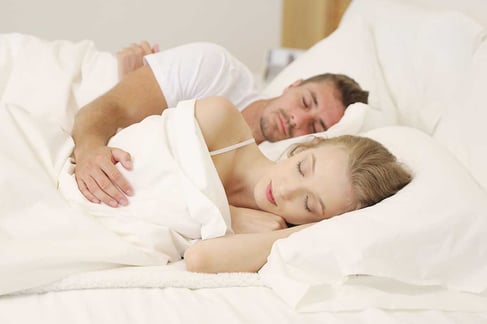 The Value of Quiet Companionship
The Value of Quiet Companionship
Although we can’t provide diagnosis or medical treatment as each case is unique, we would like to offer some beneficial information, non-medicinal aid, and some form of health education.
It is Wellcare’s hope that all our readers may find a source of understanding and support through our platform. To achieve a healthier mind and body is the ultimate goal, and Wellcare aspires to become a source of support throughout your healthcare journey.
Wellcare only aims to touch on a few of the most common body ache types that can be addressed through our innovative yet effective techniques. Our research has been conducted based on the experiences and challenges our audiences have experienced throughout the years, and some of these have been collected to share our insights regarding your messages and comments.
Abdominal Body Aches: Menstrual Cramps
Menstrual cramps are characterised by a very painful sensation in the abdomen, experienced as a moderate to an intense level of pain.
According to a study, 84.1% of women suffer from menstrual pain, 47.8% feel that menstrual pain lowers their quality of life, and 44.6% feel that period pain affects their social life. There are a number of ways to help soothe menstrual cramps.
Effects of Menstrual Cramps
We have collected a few insights from our readers that explain the repercussions of menstrual pain. Some cases have been associated with severe migraines, lower back pain and in severe cases may even have a considerable impact on their work and personal lives.
It has been widely known that heat therapy is an effective method to reduce the effect of menstrual pain. To learn more about ways to alleviate this type of body ache, read about menstrual pain in depth through Wellcare’s, “How to naturally relieve period pain with heat therapy and heating pad” article.
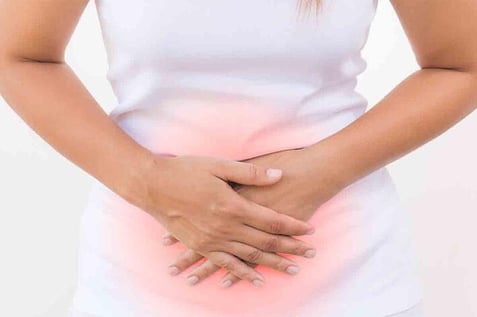
Our viewers have shared their insights and experiences regarding their many challenges related to period pains. One viewer has struggled with period pains since she was 13 years of age up until today at 50 years of age. Period pains, although not life-threatening, are a pressing concern that a specialist should examine as it is a life-altering condition that can compromise the quality of life.
One of our viewers raised that period pain is a natural pain that comes with a woman coming of age and that women should adjust to this by changing their pain tolerance. However, Wellcare believes that with the rise of health education and advancement of science, we would like to
remind readers that instead of enduring intermittent pain
and improving pain tolerance, you can use medical and
professional self-care methods.
Although heat therapy, as our articles suggest, is an effective
way to soothe the incidence of period pains, we urge our
views to seek the professional advice of an
obstetrician-gynaecologist or a physician that specialises
in treating this type of pain. Period pain can last for decades,
and it is essential to address it.
Endometriosis
Endometriosis is a condition wherein tissue that is present in the lining of the uterus, abnormally grows outside of it. This tissue behaves in the same way as tissue in the uterine lining does, it will dissolve and eventually cause a bleed toward the end of a cycle. This commonly affects the fallopian tubes, the ovaries and the tissue lining the pelvis. Because the blood is trapped inside the body, this often leads to the formation of lesions or scar tissue. There are three types of endometriosis:
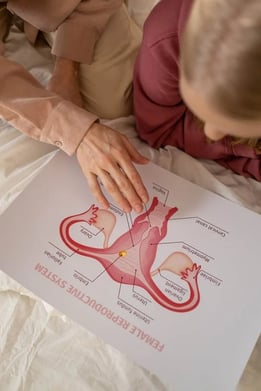 Superficial peritoneal lesion
Superficial peritoneal lesion
These are lesions located in the peritoneum tissue, a thin film that borders the pelvic cavity.
Endometrioma
Endometrioma are cystic lesions that are commonly found in the ovaries. These cystic lesions are typically filled with brown endometrial fluid, as such why these are called chocolate cysts.
Deep infiltrating endometriosis
Deep infiltrating endometriosis (DIE) is a condition where endometrium tissue is found 5 mm below the peritoneal surface. According to the Spring Open medical journal, the prevalence rate for the disease affects 1% of women of reproductive age with 90% having rectovaginal lesions. The disease also affects the bladder, rectum, and ureters.
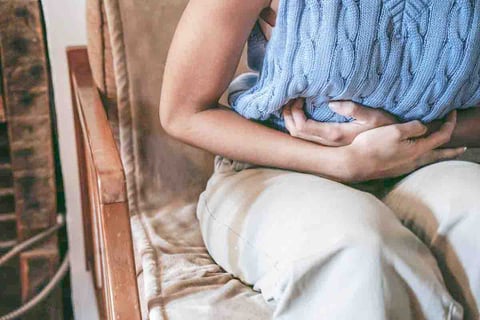 Symptoms
Symptoms
How do you know if you’re suffering from endometriosis? Although it is necessary to get a formal diagnosis, some symptoms of the disease can be attributed to it. Some of the following include but are not limited to:
Diagnosis
The diagnosis of endometriosis may be through any of the following methods, a pelvic exam, imaging tests (MRI, CT scan or ultrasound), a laparoscopy, or through a biopsy.
In order to treat Endometriosis, a doctor may opt to treat it laparoscopically or through surgery. The most common drugs used to treat endometriosis are called non-steroidal anti-inflammatory drugs (NSAIDs) such as ibuprofen, Advil, Motrin or naproxen (Aliv). Another form of oral treatment is a prescription for contraceptives. We urge our readers to consult a physician and obtain a prescription for treatment to avoid contraindication for endometriosis.
Factors that affect neck body aches
According to a Dutch study entitled, “the prevalence of neck pain in the world population: a systematic critical review of the literature”, neck pain is considered a major health problem in the Netherlands, in terms of personal health and overall well-being. Representations of neck pain vary, due to the definitions and duration of pain. These point prevalence rates vary depending on different studies conducted around the world.
Variations in neck body ache case studies and results
For example, a study conducted in York, England shows a 6% point prevalence rate, whereas the Saskatchewan Health and Back Pain study presented a 22% prevalence rate. Other areas of study in Europe show different results. A Norwegian study reported a 1.5% prevalence rate in the one year category while a Finnish study presented a prevalence rate of 75%.
Although there are variances in terms of NP rates around the world, the common theme observed is that NP afflicts women more than men in (83%) 25 out of 30 studies and that NP has been observed in older adult populations rather than younger generations.
Sleep-related neck body aches
Neck body aches is a condition that affects the 11 to 29 age group in a 1000 population sample size in the United Kingdom and the Netherlands. This kind of pain can be associated with poor posture during sleep. Wellcare provides you with tips on maintaining proper posture during sleep, to avoid neck pain and further injury during the night.
To promote proper posture and prevent neck body aches, get more information on how to get better sleep quality, free of body ache be it for your neck, nape, or upper shoulders. Read more about it in our What can I do if I got shoulder pain while sleeping? article.
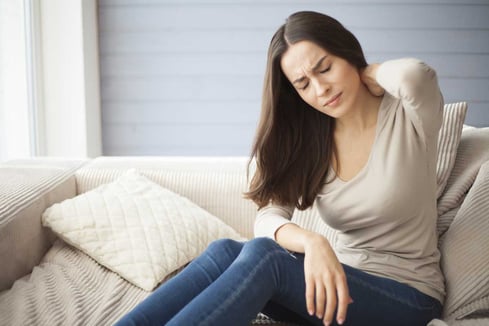 What is acute wry neck pain and how do I address it?
What is acute wry neck pain and how do I address it?
Acute wry neck is a common source of pain when you wake up in the morning. The pain felt on the neck is described as the stiffness of the muscles and difficulty in angling or changing positions. There may be many reasons for an acute wry neck condition. Some of them include but are not limited to:
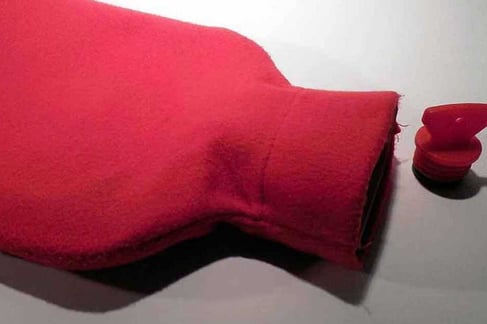 Some of the common remedies to resolve acute wry neck is through some of the following:
Some of the common remedies to resolve acute wry neck is through some of the following:
Wellcare has substantial research on wry neck pain and how to address the symptoms through simple remedies, learn more information about it by reading our Acute Pain: Solutions For Acute Wry Neck blog.
Having trouble with proper posture while you work? Our How Sitting at Your Desk Harms You — and What You Can Do About It article gives you numerous tips on how you can achieve better posture and prevent common neck body aches.
If the pain is more chronic and persists, then we urge that one seeks immediate medical attention as there might be an underlying cause.
Wellcare neck body ache case studies and insights
Body aches in the neck, upper and lower back have been found to be some of the common conditions that Wellcare viewers raised. One condition relevant to neck pain is Osteoarthritis or cervical spondylosis, a condition where there is natural age-related wear and tear to the cervical spine. Some of them cite having back pain or hernias in the neck and waist.
In the case of a herniated disc, a discectomy is usually performed. effectively reduces hernias found in the spine. This significantly reduces hernias of the spine.
According to one respondent, neck and body ache pain can be addressed through an osteotomy, a procedure that removes bone to decompress the nerve. After, functional training, which one found was effective therapy after post-surgery. One respondent has had significant success with dry needling therapy as well.
In this case, the respondent has experienced neck and upper back tension, and treatment didn’t work. However, five regular sessions helped soothe his trapezius muscles, with no headaches, or neck pain. A warm bath also helped with this condition.
Recommendations
 Wellcare emphasises the need to identify the patient’s lifestyle patterns, since the problem may be traced to other underlying conditions in the past. If a patient has severe pain, this must first be diagnosed, understand the source of the pain, before undergoing a particular regimen or treatment plan.
Wellcare emphasises the need to identify the patient’s lifestyle patterns, since the problem may be traced to other underlying conditions in the past. If a patient has severe pain, this must first be diagnosed, understand the source of the pain, before undergoing a particular regimen or treatment plan.
The key to understanding a patient’s condition is following a skilled physician or therapist’s diagnosis and advice. There are always evolving technologies and natural remedies available that help relieve discomfort besides medication and surgery.
Tips to Soothe Trapezius Muscle Pain
The trapezius muscle is a large muscle group found in the posterior of the neck, shoulders and upper back. These muscles are responsible for motor function in the shoulder blades, head and neck, among other movements. Myofascial pain syndrome is a common problem that can develop at any age. According to a Dutch study, approximately a third of working-age adults experience neck or shoulder pain on a weekly basis. Trapezius muscle pain has also been associated with office workers, symptoms of the condition may include:
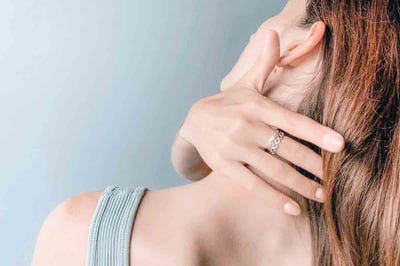
 There are different ways to prevent and remedy trapezius muscle pain which include:
There are different ways to prevent and remedy trapezius muscle pain which include:
Wellcare’s 6 Ways to Soothe Trapezius Muscle Pain provides you with important information on how to address this particular type of body ache. Neck and shoulder muscle health is important as pain disrupts work and everyday life.
Insights on Lumbar Disc Disorder
According to John Hopkins Medicine’s research, lumbar disc disorder occurs when a disc in the lower back area of the spine bulges or herniates from between the bones of the vertebral column. The vertebral column or backbone consists of 33 vertebrae and between these are spongy discs.
In lumbar disc disorder, the disc bulges and protrudes. Conversely, a herniation is much worse as the disc cracks and is more likely to irritate nerve roots. The disease causes weakening of the legs and is characterised by numbness and pain in the lower back and legs.
 Symptoms
Symptoms
The symptoms of the disease may vary depending on where the site of the herniation is located and which nerve it presses on. Some common indications of the disease include:
Causes
MedlinePlus research tells us that intervertebral disc disease can be due to different factors such as a combination of genetic to environmental reasons. Gene-related causes have been attributed to different variations in several genes that influence the risk of developing intervertebral disc disease.
Collagen consists of proteins that support and strengthen connective tissue such as skin, bone, cartilage, tendons and ligaments. These proteins make up a collective group of fibres that in part form the supporting structures within intervertebral discs.
Several collagen genes have been found to impair the ability of collagen to interact with one another. This destabilises the lumbar disc and eventually leads to degeneration.
Non-genetic factors have been identified as ageing, smoking, obesity, chronic inflammation, and driving for long periods of time (for example in a line of business as a truck driver or cab driver).
Diagnosis
An orthopaedic will ask you to undergo a series of tests. However, some of the most common procedures include an X-ray, magnetic resonance imaging (MRI) to examine if there is significant nerve or bone damage. Other diagnosis methods include:
Myelogram - Typically conducted by a radiologist, using a dye to identify and look for issues in the spinal canal.
Computed tomography scan - Provides an in-depth image of the bone structures using a CT machine. Compared to a Myelogram, the procedure shows a real-time image of the bone structures rather than the soft tissue found in the spine.
Electromyography - A procedure that measures muscle response and electrical activity relative to a nerve’s stimulation of the muscle.
Treatment
The goal of undergoing treatment is to achieve some form of pain relief and prevent further damage. A doctor should assess the extent of your condition and properly diagnose it. Once an orthopaedic doctor decides on a treatment plan, then you have the responsibility to decide if this is the best one to follow or whether or not to get a second opinion.
Lumbar disc disorder may be treated through conservative therapy methods initially. These techniques may work to manage lumbar disc disease. Here are some common methods:
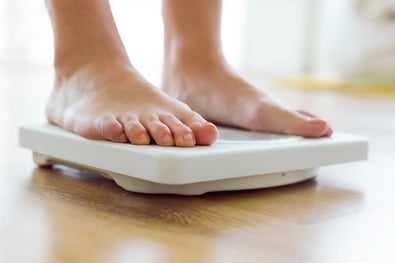
 Some advanced methods have been identified as:
Some advanced methods have been identified as:
Wellcare Lumbar Disc Disorder Case Study
Although we acknowledge that physical stretching exercises are not merely enough, these may still be done as a pre-exercise regimen. Stretching exercises help in mobility rather than staying static, which poses more complications. When we do not move our bodies for a long period of time when suffering an injury, this delays the recovery of muscles and joints, and one can experience muscle function loss.
Wellcare’s lumbar disc disorder exercises help circulate blood flow and relieve pressure points for the rehabilitation of sore muscles and joints. However, a physiotherapist should determine which parts of the body need strengthening, and what exercise program an individual should use. Proper application of systematic exercises designed by a physiotherapist and carried out by a licensed trainer is recommended.
Another Wellcare respondent described 8 mm hernias reduced to 1 mm after asymmetric gymnastics training in a specialised gym facilitated by a trained athlete. It is suggested that before any sort of method is used, an expert be consulted. Each case is unique, and although much success has been achieved through this method, not one treatment plan applies for a variety of cases.
Calf Related Body Aches: Prevalence Rate in European Countries
The National Biotechnology Research Information (NCBI) reports that there is a 3.63% prevalence rate for lumbar disc disorder worldwide yearly based on a 266 million sample size. The highest estimated incidence is found in Europe (with a 5.7 prevalence rate; and a 5668 per 100000 ratio). Thus, lumbar disc disorder is a disease that a large number of people in the continent suffer from.
How to Prevent and Treat Calf Muscle Body Aches
According to a European study, there is a 21% prevalence rate for foot or leg pain with a 6,314 population sample size. It is a burden that Europeans have faced over time, and there has been a call for the need to address this through better health care methods. Although, calf body aches are still widespread today, no matter where in the world, specific means to address this particular type of pain has been identified.
Our article on how to prevent and treat calf muscle pain explains the importance of prevention and treatment of a body ache in the calves.
Causes
A calf body ache has often been dismissed as a condition that does not merit worry or critical concern. However, there may be underlying causes for body aches in the calves.
Body aches specific to one’s calves can be traced to dehydration, overworked muscles or injuries due to nutritional deficiencies. Another cause may be due to overexertion of the muscles, or a muscular imbalance due to weak and tight muscles.
However, it may be apparent that underlying diseases are the main reason for calf muscle pain. Here are some common causes for body aches in the calves:

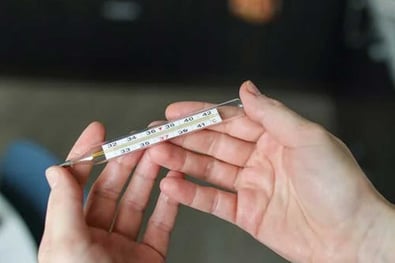 When should you see a doctor?
When should you see a doctor?
One should seek immediate medical attention when the following symptoms present themselves:
Diagnosis
To diagnose the cause of a body ache in the legs, a physical examination is conducted. A doctor may ask for a musculoskeletal ultrasound that determines the main cause of pain. This can also provide guidance on whether or not to make use of injection therapy.
Usually, in typical musculoskeletal system problems, a local point of injection is introduced in the site where there is pain. However this is a case to case basis, and treatment will depend on a physician’s diagnosis.
Home remedies
Certain home remedies may help in treating a body ache in the calves. These remedies help the muscles from constricting and help soothe painful joints or help lessen inflammation that might be a by-product of an illness or underlying disease. It is important to seek medical intervention when symptoms persist, and this should not be put off in severe cases.
Some home remedy methods include:
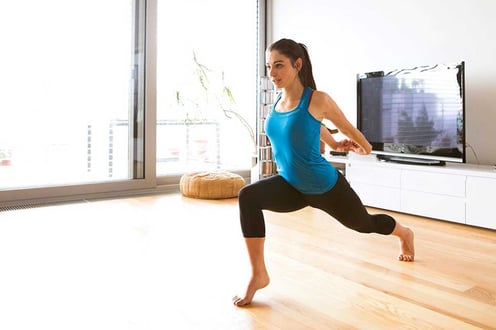 Stretching exercises -warm-ups accompanied with light to moderate-paced walking encourages blood flow and reduces muscle tightening or constriction after exercise. One must always consult a doctor before beginning a regimen or routine so as not to aggravate a condition or injury.
Stretching exercises -warm-ups accompanied with light to moderate-paced walking encourages blood flow and reduces muscle tightening or constriction after exercise. One must always consult a doctor before beginning a regimen or routine so as not to aggravate a condition or injury.
Rest - Ample rest allows for calf muscle to recuperate after light to strenuous activities.
Ice compress - Apply a cloth-covered cold compress for 10 to 15 minutes to reduce swelling.
Elevation - Keep your leg in an elevated position to promote blood flow and lessen the incidence of cramping. Position your leg or foot atop a stool while in a sitting position or position a pillow underneath your knees when lying down in a supine position. This is so to ensure that it is above level to the heart.
Compression socks or stockings can offer support while diminishing swelling. The pressure from the sleeve allows the blood to circulate properly.
Plantar Fasciitis and Bunions
Heel pain most commonly caused by plantar fasciitis (PF) is a common complaint of many patients who require professional orthopaedic care mostly beneath the heel. The article reviews studies on the anatomy of plantar fasciitis and their histopathological features (the diagnosis and study of diseases of the tissues).
Foot Body Aches: Initial Treatment Prioritised
According to a study some medical treatments are favoured or prioritised above others. These include anti-inflammatory agents, plantar stretching, and orthosis. Whereas corticosteroid injection, night splints and extracorporeal shock wave therapy were of some lesser priority in patients with PF.
In patients resistant to the mentioned treatments, surgical intervention is recommended.
Prevalence
Common fasciitis is one of the diseases that people all over the world suffer, even in foot and ankle medical practice. Plantar fasciitis (PF) is the most usual cause for chronic-beneath-the-heel pain in adults, and 11-15% of the populace requires formal health treatment from medical practitioners. The same study says that about one in 10 people develop PF in their lifetime, while the incidence of PF is seen more in obese females and young athletes.
Other relevant names for the disease include painful heel syndrome, runner’s heel and calcaneal periostitis as referred to in research studies.
Changes in the physical tissue structures and representation have been suggestive of degeneration rather than inflammation. The study describes the fascia as noticeably “thickened and gritty.”
This pathological change (caused by disease or illness) is more consistent with fasciosis (degenerative process) rather than fasciitis (inflammatory process) but fasciitis remains the accepted description in literature.
Foot Body Aches: Bunions
A bunion or bunionette is a protrusion or deformity of the joint in the foot where the bones of the foot and the big toe to conjoin. The most prominent symptom is a bump to the side of the foot at the base of the toe. Other symptoms of a bunion (hallux valgus) include the following:
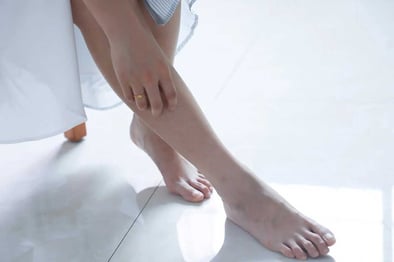
Dealing with bunion related body aches
There are many causes to explain why bunions develop: some include genetics, congenital deformities and injury in the foot or toes. Other reasons may be due to tight-fitting footwear such as heels or platform boots. Regardless, wearing tight or high-heeled footwear can make a bunion worse. The tightness can impede the blood supply and result in the bursa and surrounding tissue to swell and inflame.
If you have a bunion, it is suggested to take measures to prevent the development of plantar fasciitis.
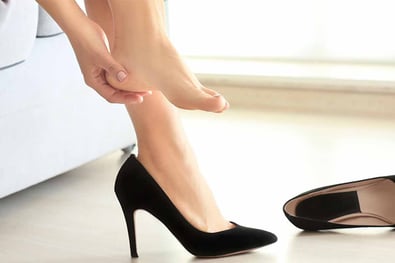 Simple natural remedies for bunions
Simple natural remedies for bunions
More serious cases
In the case of more advanced symptoms, consult a doctor immediately. A doctor might introduce cortisone intravenously or through injection to decrease swelling. For normal joint pain, it is not common to adopt intravenous anti-inflammatory pain relief for joint pain.
For more information on dealing with bunions and plantar fasciitis read our How to Relieve Plantar Fasciitis and Bunions In A Natural Way article.
 Haven’t found a part-specific body ache that matches your experience? Fear not, our other articles might just resonate with your case in point.
Haven’t found a part-specific body ache that matches your experience? Fear not, our other articles might just resonate with your case in point.
Heat is essential to activate TRPV1 and nociceptors for your body to trigger a response to combat a body ache and heat therapy has been the most common method to combat body aches. Find out how wet or dry heat helps promote healing and lessen the incidence of body aches.
Another specific cause for body aches to manifest are sports-related injuries. Learning to deal with a sports injury might be a process that takes months to even years, however, we’ve narrowed down the specifics in
order for you to get the best information in a quick and
easy to digest format. Read our sports injury prevention
and treatment article for more information.
The current disillusionment and critical attitudes towards pain remedies and medical treatment have become increasingly dire. A study spanning the years 1993 to 1997 has found that the emergency departments (in hospitals and pain clinics across Europe) are inefficient in the administration of pain management and pain treatment.
This has been due to numerous factors including some inadequate knowledge of analgesic pharmacology, inappropriate administration of analgesia or intravenous pain relief medicine. The improper and untimely provision of analgesia when needed in emergency-related cases (cases of intolerable chronic pain) has been ruled out as the cause.
The study’s initial impressions and findings pointed to many factors. An emergency department of any health facility must first acknowledge the deficiencies in its operations. Let’s take a look at these findings:
Inadequate and inconsistent dialogue on the topic of analgesia procurement, and analgesia provision
Insufficient provision of analgesia facilitated through inappropriate pain management methods
Delay in increasing analgesia doses when needed
Pain management not perceived as a high priority
Routine reporting of patient experienced pain as part of nursing observations
A change in the emergency department wherein pain management is recognized as a high priority
Transition to titrated IV opioids as the chosen method for providing narcotic analgesia
Further study and inquiry have yet to be made in terms of pain management in the emergency department (ED) of healthcare facilities and hospitals. The end goal for introducing or providing intravenous pain relief medicine is for immediate relief of chronic pain. A curated ED pain management policy has to be improved for future themes and settings and is not limited to patients with long bone fractures.
The project shows that with a change in procedural and administrative processes, significant improvement in the pain management administration, procurement and ethical practices in EDs across the globe. The decline of pain management practices is still prevalent and an ongoing challenge faced in the present time.
Adapting other means besides the administration of drugs in the management of chronic pain is necessary for the hospital setting. This includes adapting heat therapy technologies, pain procurement techniques, the policy framework for ethical practices, and instilling best ethical practices in the hospital or places for emergency health care.

We want to emphasise the need to put forward quality information for our readers, not just to aid them with the necessary tools to transcend their illness, but to also provide comfort in a time of need. Wellcare has done significant research on heat therapy and how it can be life-changing especially at times of disillusionment over treatment, regimens and medical plans that have yet to work.
We caution that our tips and pain management articles or products do not replace the advice of a physician or professional healthcare services. We aim to provide health education, and a source of support for our readers to shed some light on the recent state of pain research,
pain management, and medication. We aspire for better
health for our readers, liberate them from their painful
episodes, and empower them to pursue their goals and
aspirations, and future endeavours pain-free.
Pain management is made easy when you have a partner that cares for your overall well-being—may it be your mind or your body. Health starts with self-care, and we are with you every step of the way as you undergo your health care journey. At Wellcare, it’s not just about better healthcare, we care well for your health.
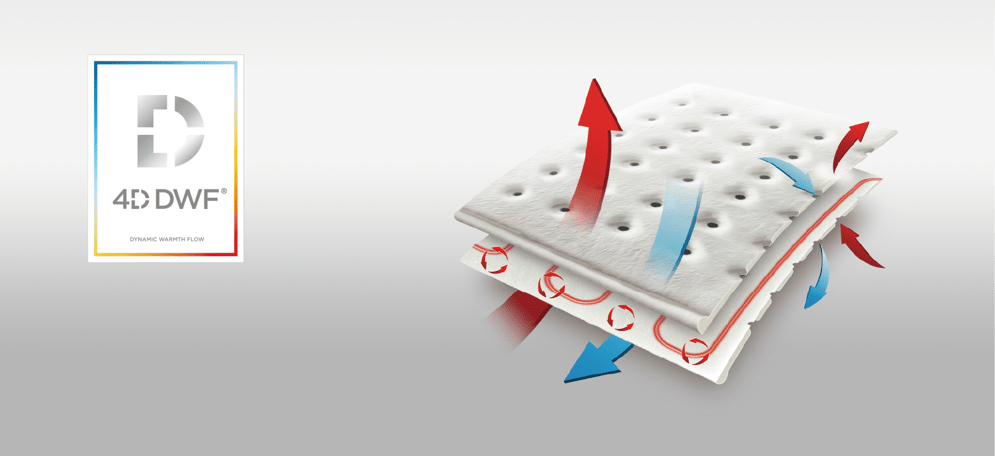
Eliminate body aches today with our comprehensive guide. Enter modern pain-free and experience a more rejuvenated you with our innovative tips. Learn more about Wellcare 4D DWF technology, and how heat therapy is essential for managing body aches.
"How to create the perfect sleeping environment"
Not being able to sleep well has become a big problem for everyone in the world. Nowadays, we all experiencing much more mental stress and that is making us hard to relax.
Are you looking for ways to get a better night of sleep? Building a comfortable environment is crucial to falling asleep and rest well.
Would you like to sleep better and gain more energy the next day? If so, this "How to create the perfect sleeping environment" Ebook is perfect for you.
